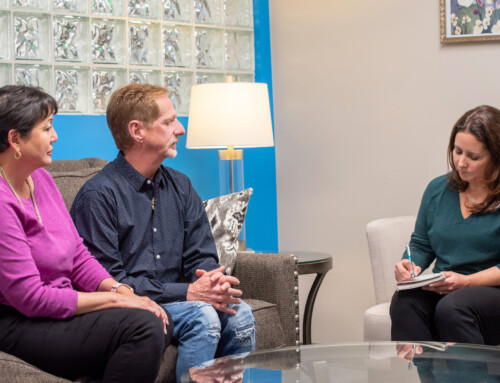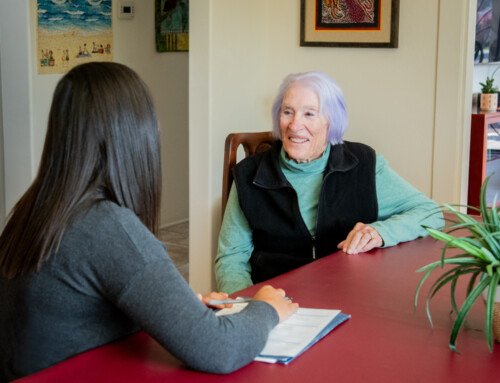
Dementia Care Coach Corner: Written by Ellen Boucher, BSW
Negative emotions are a part of everyone’s life. The amount and frequency of negative feelings can vary throughout life, but what is consistent is that no one wants to feel sad, mad, scared, frustrated, or any of the other emotions that make us feel bad. But what if we could give those feelings a purpose? Use the unwanted feelings for our good? How might we do that? Here we’ll walk you through how to harness negative emotions for positive outcomes throughout the dementia journey, whether you’re the person living with it, a caregiver, or affected in any other way.
Harnessing Negative Emotions for Positive Outcomes
First Step – Catch It
The first step would be to notice when you are feeling a negative emotion. Although this can seem to be the hardest part sometimes, it is something we can train ourselves to do. Becoming self-aware is a habit we can develop with practice. Some strategies to become self-aware can include scheduling multiple times throughout the day to do a check-in with yourself/your body or setting alarms on your phone for varying times to remind yourself to do a check in. You can train yourself to do a check in when you walk through a door, move your body position, stop at a red light. There are so many ways to remind yourself to become aware of how your mind and body feel. Find what works for you as reminders to do a self-check in. Learning to catch feeling negative is the first step to making it work for you.
Second Step – Shift It
How are you feeling in your body and in your emotions? Are you breathing shallowly, is your body tight, what does your voice sound like and how do your interactions feel? Learning to recognize how we express negative feelings through our body, words, tone, and actions, can help us catch the negative feelings quicker. This is important because once we catch them, we can begin the second step which is to work to shift from expressing negativity to feeling calm. With practice, this can be easier than it sounds. For example, focusing on your breathing, doing some type of movement, stepping away from a situation can all help with negative physical expression. As you calm the physical you can better work with the mental and emotional feelings. The goal with the second step is to bring yourself from feeling negative to feeling a sense of calm. It may be only a moment of calm in the beginning, but that moment is the key to using your power to shift from a negative to positive use of a feeling or situation.
Third Step – Use It
A place of calm creates a space for you to consider what caused the negative response to a situation and what you can do in the moment to create positive. There are many ways that this awareness can be used. Perhaps you can step back into a room and take a failing conversation in a new direction. You might use your knowledge to plan how to avoid a similar situation in the future. Even if you cannot see a way to fix a problem, learning to recognize when you need to step away before the negative feelings increase can be a positive change. The key is to take the negative and use it as a learning experience to prepare for the future – make it work for you instead of against you.
A Penny for Your Thoughts
Sometimes a tangible reminder can be helpful. One way I remind myself of the opportunity to use negative emotions for positive outcomes: a penny. This came about when I saw a penny on the ground tail-up. As a little girl it was drummed into me that this meant bad luck so I would walk past the penny. As an adult, I came to realize that I could change the meaning of seeing a tails-up penny so I chose to look at it as opportunity and I would pick up the penny. An even bigger reality is that a penny holds the same value whether it is heads-up or tails-up. The only thing that changes is how I think about the penny and use (or don’t use) it. This is the same for negative emotions. We can become aware of the “tails-up” belief about negative emotions and change how we look at a feeling or situation and then use it for positive outcome.
You Are Not Alone
Sometimes it can be hard to use our negative emotions. Speaking with other people can often help. Connecting with family or friends, a support group of peers who are going through the same type of situation, or calling to speak with a Dementia Care Coach at Alzheimer’s San Diego can provide someone to brainstorm with or even just share what you are feeling. Please reach out if you would like to speak with us. We will help you find the value in your negatives so you can turn them to positives.
Call us at 858.492.4400 to speak with one of our dementia experts who are here to help San Diego County residents and/or those caring for someone living in San Diego County (Spanish speakers available). Also check out our free education classes, social activities, caregiver support groups, & more.
Our “Dementia Care Coach Corner” series is where our team of dementia experts weigh in on unique topics and provide insight that can help people impacted by dementia.
RECOMMENDED: How Placement Agencies Work & What You Need to Know
Posted on May 8, 2025




